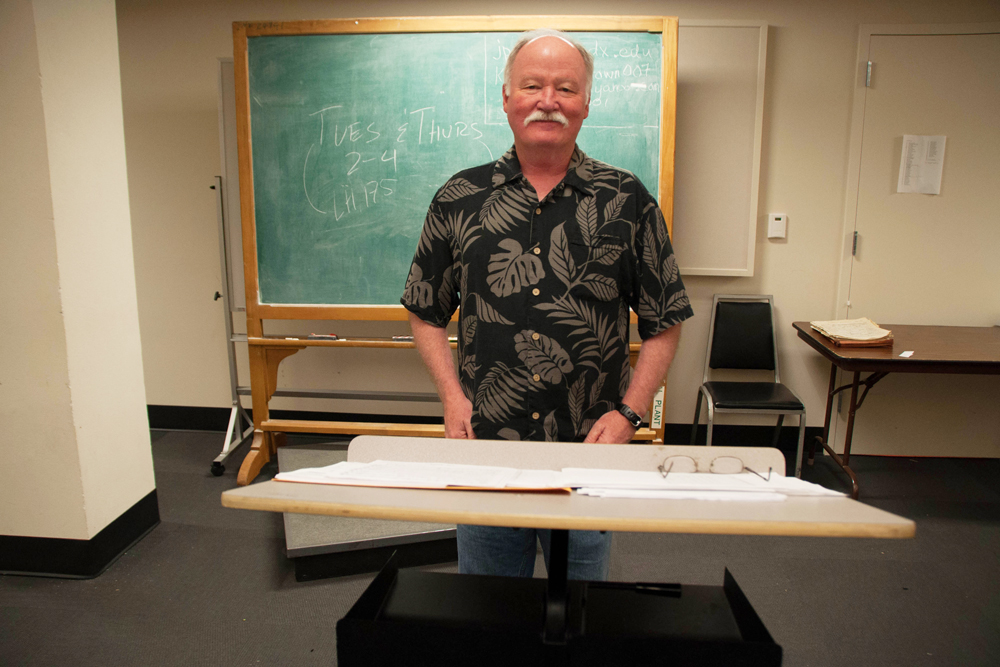The Portland State Aerospace Society (PSAS) will be launching a rocket for the first time in nearly two years in hopes that this one will land a little smoother than last time.
Back with a bang: rocket club
The Portland State Aerospace Society (PSAS) will be launching a rocket for the first time in nearly two years in hopes that this one will land a little smoother than last time.
In 2005, PSAS built a rocket that reached an altitude of 18,848 feet, and then plummeted to the desert floor. The parachute mechanism malfunctioned, and the force of the impact scrunched the 12-foot rocket into a four-foot pile of metal scrap.
“It landed in the middle of a scrub brush and split it in two,” said Sarah Bailey, a student who was a member of the recovery crew. “We decided to basically redesign everything.”
The long-term goal of PSAS is to put nanosatellites, smaller satellites, into orbit. This is a goal that no amateur rocket club has managed to attain, and is still far in the future for PSAS. It is the challenge as well as the end results that drive the student group.
“You have to solve a lot of cool problems along the way,” Bailey said.
“We’re having a lot of fun,” said Bart Massey, the faculty adviser. He said that PSAS has had a lot of firsts and near first breakthroughs. “Nobody has anything compared to what we have,” he said.
Rockets cannot simply be launched into orbit. They can be shot up past the moon, but without guidance they will simply come straight back down. Rockets must also have a guidance system, called “avionics,” to move them sideways into the correct trajectory.
These guidance systems cost upwards of $250,000, so PSAS is designing their own. Very few of the rocket’s components come from stores, most being designed by the group. Funded in part by grants, the group is used to scrimping and finding creative solutions.
A pneumatic lifter that used to change light bulbs in a high school gymnasium became the frame the rocket is launched from. The group spent two years designing antennas that cost $200 each instead of $18,000 each.
The group is open with their designs. They post the blueprints on their website so other people can benefit from their experience.
“We like to be open-sourced,” said Bailey. “That’s the goal: sharing the knowledge we learned.”
Currently, the group is looking for more people to get involved with the projects.
“Lots of people have gotten jobs from being involved in the group,” said Massey. He said it fills a gap because the PSU engineering program does not have much opportunity for hands-on design opportunities.
The motors for the rocket have to be bought within certain regulations. However, they buy them from a former member of the group, and the group itself did most of the work that went into the motor’s design.
PSAS is split into teams that work on the separate components of the rocket, such as avionics, and adaptable airframes. Senior capstones can be built around the group’s different projects.
“We are looking for new student members,” said Bailey. “We’re redesigning, so it’s a good time to come into the group.”
Bailey said that there is work available for all majors, not just computer science and engineering students.
The Federal Aviation Administration (FAA) must be contacted before launches. The group has a good relationship with the FAA and similar government associations, but it still takes at least 45 days of notification to get a launch waiver.
“The FBI knows who we are,” said Massey.
Not just students make up PSAS–members of the community, staff and faculty are involved. Bailey said there are about 15 core members, with 25-30 working in the groups, drifting in and out.
Andrew Greenburg, who was present at the group’s first launch in 1998, is now on staff at PSU and still a member of PSAS. They have come a long way, he said, since the support team was a computer in the back of a car.
The new launch date is scheduled for June 15 in Brothers, Ore. If all goes well, the group plans to send it up again at a rocket launch in Nevada. They intend to set up a U-Haul van as a mobile laboratory, and hope to fly for the first time with a new avionics system.



